Scroll
Merchant bars and beams represent an important division inside our company’s business
Bars are used for the construction of light and heavy carpentry, general locksmith work, and the construction of small structures such as mezzanines, canopies, sheds and metal structures. We boast a wide range of sizes supplied from the major Italian and European manufacturers, in S275, S355 qualities and in various degrees of resilience. We can also cut the material to size and, particularly for beams, we can notch, drill and also perform incline cutting. Upon request, we can also supply already galvanized or sanded, primed or painted material.
MERCHANT BARS
Flat merchant bars products are rectangular in cross-section and are manufactured by hot-rolling on all four faces. Their thickness generally ranges from 3 to 60 mm and width from 10 mm to 400 mm. They are mainly used for the construction of metal structures. If required, we subject the product to galvanising, cutting and drilling.
Also available as galvanized
Square merchant bars feature a square cross-section with a sharp edge. They may be intended for subsequent mechanical processing or drawing. Square merchant bars are mainly used in the carpentry or furniture sector. If required, we subject the product to galvanising and cutting.
Also available as galvanized
Angular merchant bars (featuring an angle like the one of the entire segment) are obtained through a hot rolling process and their characteristic feature is having a 90° angle section in all sides. Fratubi also provides galvanized and made to measure angular merchant bars according to customers’ requirements in relation to length, thickness and quality standards. If required, the material can also be supplied perforated as well as cut. Angular merchant bars are mainly used in steel construction, carpentry in the mechanical engineering industry.
Also available as galvanized
L-shaped merchant bars are realized through a hot-rolling process and their characteristic feature is having a 90° angle section in unequal sides. Therefore, they are characterised by three dimensions: height, length and thickness. This type of product is widely used for steel carpentry. If required, we subject the product to galvanising, cutting and drilling.
Also available as galvanized
T-shaped merchant bars are realized through a hot-rolling process and their characteristic feature is having a section shaped like the letter T at equal sides which are at a 90° angle one from the other.
Therefore, their dimensions are: height, length and thickness. This type of merchant bars is usually employed in carpentry of all kinds, mainly in commercial, industrial and civil building structures. If required, we subject the product to galvanising, cutting and drilling.
Also available as galvanized
U-shaped bars are realized through a hot rolling process and their characteristic feature is having a section shaped like the letter U- on sides at 90° angles to each other. These particular type of bars fall under two categories: UP N (normal series) and UP S (special series). They differ slightly in thickness and cross-sections and, unlike other merchant bars, the U merchant bars have standard sides and thicknesses and cannot be subject to any customization. These particular type of merchant bars are widely used in structural carpentry of all types and sizes, from light to heavy, very often serving as the load-bearing element of these, and having a size range which goes from a starting point of 25 mm to 400 mm. If required, we can cut, notch and drilled U-shaped merchant bars. We can also subject the product to galvanising, sandblasting or priming.
Also available as galvanized
BEAMS
HE beams is made of two horizontal parts, one upper and one lower, joined by a vertical part called “core”. Their shape is reminiscent of the letter ‘H’ in the alphabet and the thickness of the core is more or less depending on each specific category. In fact, they are subdivided from thinnest to thickest with the letters ‘A, B and M’. Given their shape, which is resistant to bending, the predominant use of H-beams is in those parts of structures where compressive strength is needed. Therefore, the He ‘A’ beam is the lightest of the series and is widely used for structures that do not require high rigidity. Upon request, this material can be supplied: cut, drilled, notched; if required, we can also finish it with sandblasting, painting, primer and galvanising.
HEB beams are made of two horizontal parts, one upper and one lower, joined by a vertical part called “core”. Their shape is reminiscent of the letter ‘H’ in the alphabet and the thickness of the core is more or less depending on each specific category. In fact, they are subdivided from thinnest to thickest with the letters ‘A, B and M’. Given their shape, which is resistant to bending, the predominant use of H-beams is in those parts of structures where compressive strength is needed. Therefore, the He ‘B’ beam is the average of the series, widely used for structures requiring high rigidity. Upon request, this material can be supplied: cut, drilled, notched; if required, we can also finish it with sandblasting, painting, primer and galvanising.
HEM beams are made of two horizontal parts, one upper and one lower, joined by a vertical part called “core”. Their shape is reminiscent of the letter ‘H’ in the alphabet and the thickness of the core is more or less depending on each specific category. In fact, they are subdivided from thinnest to thickest with the letters ‘A, B and M’. Given their shape, which is resistant to bending, the predominant use of H-beams is in those parts of structures where compressive strength is needed. Therefore, the He ‘M’ beam is the heaviest of the series, widely used for structures requiring significant high rigidity. Upon request, this material can be supplied: cut, drilled, notched; if required, we can also finish it with sandblasting, painting, primer and galvanising.
Their shape is reminiscent of the capital letter ‘I’ of the alphabet and therefore consists of two wings, one upper and one lower of the same size, joined by a central core. Their particular cross-section makes them suitable for withstanding bending and cut stresses, and they are therefore widely used in the construction of floors. This series ranges from the smallest 80 mm IPE beam to the largest 600 IPE beam; the nomenclature of each section derives from its height, including core plus wing thickness. Upon request, the material can be supplied: cut, drilled and notched; if required, we can also finish it with sandblasting, painting, priming and galvanising.
Their shape is reminiscent of the lower-case letter ‘I’ of the alphabet, with very rounded corners. It therefore consists of two wings, an upper and a lower one, joined by a central core. Their peculiar cross-section makes them suitable for withstanding bending stresses, and they are therefore used in the construction of floors. This series ranges from the smallest 80 mm INP beam to the largest 600 INP beam; the nomenclature of each section derives from its height, including core plus wing thickness. Upon request, the material can be supplied: cut, drilled and notched; if required, we can also finish it with sandblasting, painting, priming and galvanising.

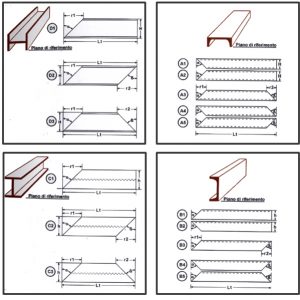
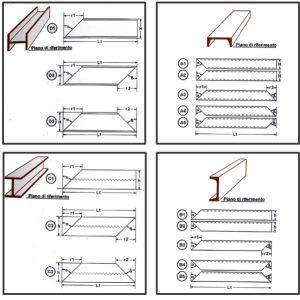
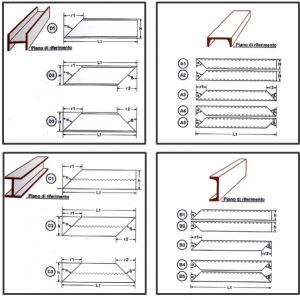
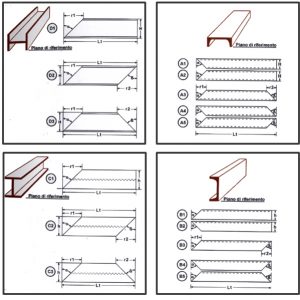
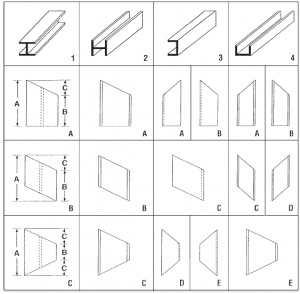


 Marketing e Comunicazione
Marketing e Comunicazione